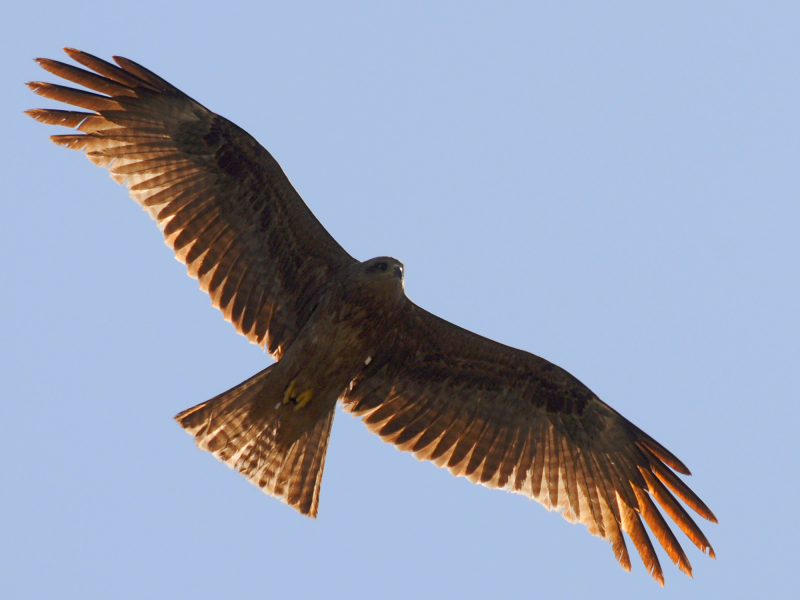Colours
Distinguishing features
The sexes are alike. The upper plumage is brown but the head and neck tend to be paler. The patch behind the eye appears darker. The outer flight feathers are black and the feathers have dark cross bars and are mottled at the base. The lower parts of the body are pale brown, becoming lighter towards the chin. The body feathers have dark shafts giving it a streaked appearance. The cere and gape are yellow, but the bill is black (unlike in the Yellow-billed Kite). The legs are yellow and the claws are black. (Wikipedia)
Size
- From 50 cm to 55 cm (Length of specimen) - applies to Females
- From 47 cm to 52 cm (Length of specimen) - applies to Males
Wingspan
- Up to 120 cm
Synonyms
Distribution
Distribution and habitat preferences
The species is found in Europe, Asia, Africa and Australia. The temperate populations of this kite tend to be migratory while the tropical ones are resident.
The species is not found in the Indonesian archipelago between the South East Asian mainland and the Wallace Line.
Vagrants, most likely of the black-eared kite, on occasion range far into the Pacific, out to the Hawaiian islands.
Vagrants from Australia occasionally reach New Zealand. (Wikipedia)
Audio recordings
Recorded at Kakadu National Park (near Kakadu), Northern Territory in Australia with a range of other bird calls in the background/foreground.
© Marc Anderson
(source)
Diet
They are most often seen gliding and soaring on thermals as they search for food. The flight is buoyant and the bird glides with ease, changing directions easily. They will swoop down with their legs lowered to snatch small live prey, fish, household refuse and carrion.
They are opportunist hunters and have been known to take birds, bats and rodents. They are attracted to smoke and fires, where they seek escaping prey. (Wikipedia)






